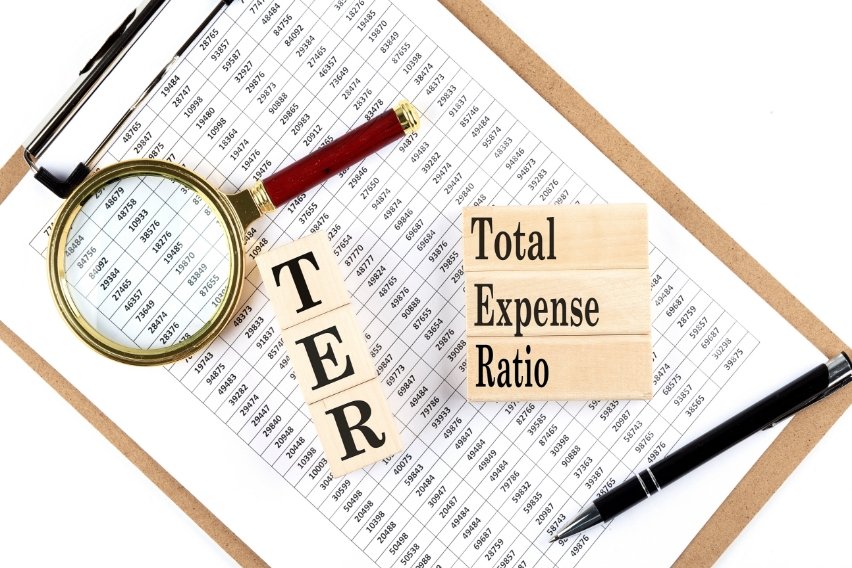Project Cost Estimating: Definition, Importance & Methods

Cost estimation is a crucial procedure in project management. In fact, it rests as the foundation for establishing and managing a project budget.
Costs are initially estimated at the commencement of a project or before a project has begun. We perform project cost estimations on a regular basis. Why? To account for new information or adjustments to the scope or timetable.
Read on as we take a closer look at what project cost estimating is, why it’s important, and how you can accurately estimate the cost of a project.
Table of Contents
What Is Project Cost Estimating?
Why Is Cost Estimation Important?
How to Accurately Estimate the Cost of a Project
Methods of Project Cost Estimating
Project Cost Estimation Example
What Is Project Cost Estimating?
Project cost estimating relates to an estimated number of resources needed to finish a project or certain elements of a project.
These cost projections are frequently given in monetary terms. But if the monetary values are not appropriate or are irrelevant, we must instead utilise alternative units. Such an example would be man-days.
There are various sorts of cost projections. The rough order of magnitude (ROM) and the precise estimate are both listed in the Project Management Body of Knowledge (PMBK). Both categories differ in accuracy, the project phases we use them in, and their tools and approaches. Some projects use extra—occasionally sector-specific—sorts of estimates.
Cost estimation supports the project budget and makes it possible to track and manage project costs as they develop. A cost estimate or intended price is then used to describe the rough project cost. Given that the project scope is a dynamic phenomenon, it covers all project costs and is challenging to anticipate.
There are various tools and strategies we use in cost estimation. They comprise of:
- Expert opinion
- Bottom-up estimation
- Analogous estimation
- Cost of quality
- Parametric estimation
- Three-point estimation
Why Is Cost Estimation Important?
Estimating project costs might not be the most enjoyable aspect in a project’s lifecycle. But getting the budget correct might make the difference between your project succeeding or failing.
Team leaders must be vigilant during the planning and forecasting phases of projects. This ensures that they are taking on work that is viable and lucrative and that their project costs are appropriately estimated.
The procedure must specify how long tasks will take and who will complete them. You must also closely track the project, because project cost estimation relies on connecting expenses to a scope of work. Estimating project costs is a continuous process that you must watch over and modify as a project develops.
How to Accurately Estimate the Cost of a Project
There are 5 steps that you can take to ensure that you are accurately estimating the cost of a project. They are as follows:
- Make a list of the tasks to complete and the materials needed to finish them
- Determine and assign resources to tasks in accordance with your team’s capabilities
- Calculate the duration of the task to develop a project schedule
- Determine the project’s cost using the selected estimation technique
- Track budgets in real-time by using tools for project cost estimation
Let’s take a closer look at each of these steps in detail:
1. Make a list of the tasks to complete and the materials needed to finish them
The first step that you’ll need to take to accurately estimate the cost of a project is to understand what resources and tasks you need.
To do this, it is simplest to divide the job into smaller, distinct tasks. For instance, if your company has to create a website from scratch, you’ll need to outline the following tasks for each project stage:
- Research/planning
- Design
- Back-end and front-end development
- Copywriting
- A test or bug fix
- Launch
Naturally, the task list will vary depending on the project. However, the first stage will divide the project into distinct jobs. This makes it simpler to determine how much each of them will cost after assigning them to team members with hourly rates.
There are two ways to do this. First, you must make sure you and your client are on the same page. Second, you must ensure your scope of work accurately reflects what they want from the project.
Not all estimates result in projects you’ll actually work on. However, if the client does hire you, you’ll be happy your cost estimate was accurate when it comes time to send out your invoice.
2. Determine and assign resources to tasks in accordance with your team’s capabilities
The next thing you need to do is make sure you have enough personnel with the necessary skill sets for the job. To complete a project, you must have the necessary time and the appropriate quantity of people.
It comes down to the strength of the team. Recognising whether the team has time to take on additional projects or not is one of the main challenges that team leaders face. This is probably due to insufficient capacity planning.
Planning helps assess whether there are sufficient individuals available to complete a project. This is primarily based on availability and skill sets.
3. Calculate the duration of the task to develop a project schedule
Burnout will result from operating at full capacity with your team. A utilisation rate of 80% is great because it gives your staff some extra time to complete other activities.
So, it’s crucial to estimate project costs realistically when determining how long each activity and the project as a whole will take. This is for the benefit of your project and, more crucially, your team.
Utilising time tracking is one well-liked method for doing this.
This is the practice of recording an employee’s working hours. The number of hours spent on activities or projects are then used to determine how many billable hours you can charge the client for.
It’s also a secure means for managers to determine how much time it takes to perform certain work and where an employee is spending their time.
4. Determine the project’s cost using the selected estimation technique
If your organisation has kept track of previous projects of a similar nature, you may use those records to examine how long work took and how much it cost. Reach out to your team and request their assistance for this. They can help you determine how long each activity should take as you will need to make imprecise estimates in the absence of facts.
Always be truthful when estimating the time it will take to complete each job on your list. If you don’t give each assignment enough time, your project’s profit margins may suffer.
5. Track budgets in real-time by using tools for project cost estimation
Finally, once a project gets going, it’s critical to keep track of it.
It’s common for projects to encounter roadblocks. If you don’t stay on top of these as they arise, they could entirely go off the rails and blow a hole in your budget.
Monitoring your spending might also assist you in determining how profitable a project was once it’s completed.
Methods of Project Cost Estimating
Ballpark Estimate
You can get a rough estimate of the cost of a project based on conjecture.
Does your client have a budget in mind? If not, an approximate estimate that you can give your client will help you determine whether they can finance a job before it begins. This calculation typically incorporates costs specific to the project in question. It also accounts for similar tasks you’ve completed in the past.
Parameter Estimation
A data-driven method of project cost estimation is parameter estimation. It provides you with a more accurate estimate of a project’s cost based on historical data.
Determine how much time you will spend on each activity on your list at the beginning. The cost amount is then added by dividing the number of hours spent on each task by the hourly rate of each team member.
You can do this by using the following formula:
Task Cost = Task Duration x Hourly Rate of Employee
Add together all the costs you’ve determined for each task to arrive at an expected total.
This approach is more time-consuming than using a ballpark estimate. But it is also more precise. It functions well for jobs that have clear beginning and ending points, such as social media management initiatives.
Three-Point Estimation
You may also determine the cost of a project using a three-point estimation method. This takes into account realistic, optimistic, and pessimistic cost projections.
So for example, when you’re building an estimate that you think will cost the client £20,000, you’d come up with three figures:
The likely cost: £20,000
The optimistic cost: £15,000
The pessimistic cost: £25,000
A three-point estimator has the advantage of linking project costs to risks and uncertainties. This allows you to prepare for “worst-case” scenarios. Remember to take time buffers and overheads into consideration when using three-point estimation.
Project Cost Estimation Example
Let’s say that a business is looking for someone to complete a project and they want an estimate. In order to do this as accurately as possible, your business, “Business X”, will use project cost estimating.
You should first make a list of all the components your construction project will need. To determine costs, gather all your construction project management documentation. This includes plans, designs, specifications, as well as blueprints and permits. List administrative charges, financing costs, and legal fees in your documentation. Also list engineering fees, insurance, and any other cost components.
It’s time to employ a work breakdown structure (WBS) to list all the activities involved in your building project. You would determine the following:
- The labour expenses
- Direct expenses
- Indirect expenses related to each activity in your project schedule
Contractors can estimate prices for each building activity. They do so to produce precise proposals for the construction bidding process. For this, they will use a variety of cost-estimating methodologies, such as bottom-up estimation.
A line total is then calculated by combining these expenses. The overall cost of the project is then calculated by adding the line totals mentioned before.
Key Takeaways
Delivering on time, within scope, and under budget is one of the most crucial components of effective project work. This is regardless of whether you work in design, development, engineering, or any other professional service industries.
It necessitates careful planning, forecasting, and progress tracking. Project managers can use the method of project cost estimate to assist with these projections. Doing so may also create a better end result for their clients.
Estimating project costs involves determining how many resources you require. (That is, to complete a project or particular project components.) Often, these project cost estimates are expressed in terms of how much money is owed. However, alternative units, such as man-days, are also fine if monetary values are inappropriate or irrelevant.
The most common methods of project cost estimating include a ballpark estimate, a parameter estimation, and a three-point estimation.
FAQ on Project Cost Estimation
What Are the Types of Project Cost Estimates?
Typically, methodologies like analogous, bottom-up, and parametric estimating are great for definitive estimations.
How Do You Calculate Cost Estimate?
Each cost estimation technique aims to forecast both fixed and variable expenses. We then communicate this forecast to the client.
Who Prepares the Cost of Estimation?
An expert who creates cost estimates is a cost estimator.
What Is the Most Accurate Cost Estimating Technique?
One of the most accurate cost estimation strategies is an analytical estimate. This is often known as bottom-up estimating but the method can also take a lot of time.
RELATED ARTICLES



 Creative Accounting: Definition, Types & Methods
Creative Accounting: Definition, Types & Methods Total Expense Ratio (TER): Definition, Formula & Limitations
Total Expense Ratio (TER): Definition, Formula & Limitations Accounting Records: Definition, Types & Examples
Accounting Records: Definition, Types & Examples Departmental Accounting: Definition, Types & Methods
Departmental Accounting: Definition, Types & Methods Pricing for Cleaning Services: How Much to Charge for House Cleaning
Pricing for Cleaning Services: How Much to Charge for House Cleaning 7 Steps for Estimating a Painting Job in South Africa
7 Steps for Estimating a Painting Job in South Africa